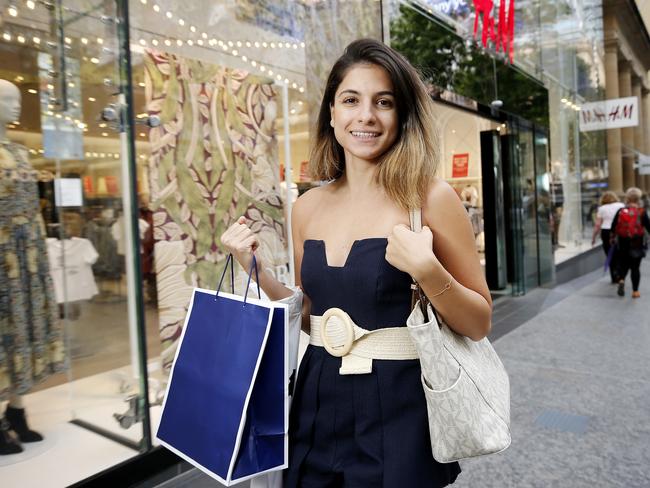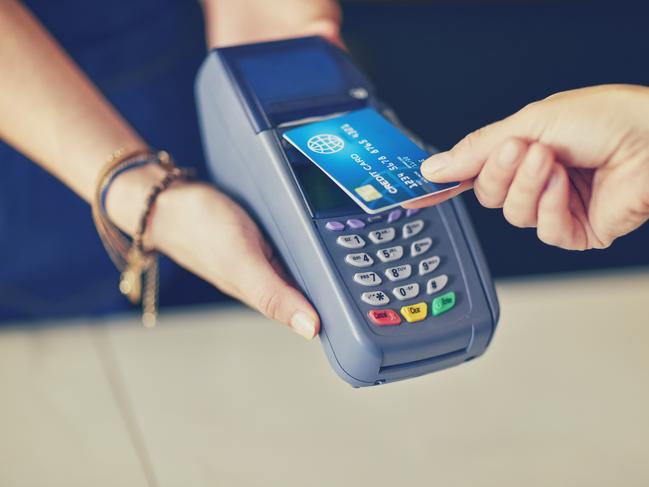Consumers need to watch out for excessive ‘Tap and Go’ surcharges
Tap and Go spending is a convenient way to pay for purchases but users are being hit with sneaky fees to use it.
Costs
Don't miss out on the headlines from Costs. Followed categories will be added to My News.
Australians are the world’s number-one users of tap and go, but many people are being stung with sneaky surcharges.
Somer retailers are failing to tell customers about the cost of tapping, even though they are meant to by law.
Savvy consumers are able to avoid surcharges — if warned about them beforehand — by simply inserting a credit or debit card into a payment machine.
Businesses are allowed to charge customers what it costs them to process a payment.
Sometimes that is levied as a flat fee of up 50 cents on tap and go transactions.
There is a perception that fixed-amount surcharges are illegal. That is not the case if the business is itself being charged a flat fee on payment processing.
But financial comparison website RateCity’s spokeswoman Sally Tindall warned consumers they “could be getting hit with unfair surcharges if retailers are doing the wrong thing.
“A lot of surcharges can be avoided with a bit of planning, always have a little bit of cash with you up your sleeve,” she said.
“Don’t use tap and go if there are surcharges — you can insert your card and pay using eftpos instead.
“It may still attract a surcharge but it’s likely to be smaller.”
MORE FEE FIGHTER STORIES:
How to avoid the most despised bank fee
Concert ticket fees that are ripping you off
How to avoid hidden cinema fee charges


The Australian Competition and Consumer Commission’s deputy chair Mick Keogh said customers should always ask merchants what they are being charged before paying by card.
“When a business accepts payment via a debit or credit card it usually incurs costs for processing the payment,” he said.
“For example if the cost to a business for accepting a Visa credit card is 1 per cent a business can only add a surcharge of 1 per cent for customers who choose to pay using a Visa credit card.”
Businesses can charge a flat fee but it must not exceed the cost of acceptance for the transaction.
Mr Keogh warned: “Businesses should be careful about imposing a flat fee surcharge where the amount of a transaction is relatively small.
“In those circumstances the surcharge is likely to be excessive,” he said.
The Reserve Bank of Australia guidelines state that eftpos payments — made by inserting a card — should have a surcharge below 0.5 per cent.
Those accepting Visa and Mastercard can charge between 1-1.5 per cent and American Express between 1.5-2 per cent.
Numerous international comparisons have put Australia at the top of contactless payments use. These include research by ATKearney and data from Visa.
Originally published as Consumers need to watch out for excessive ‘Tap and Go’ surcharges


